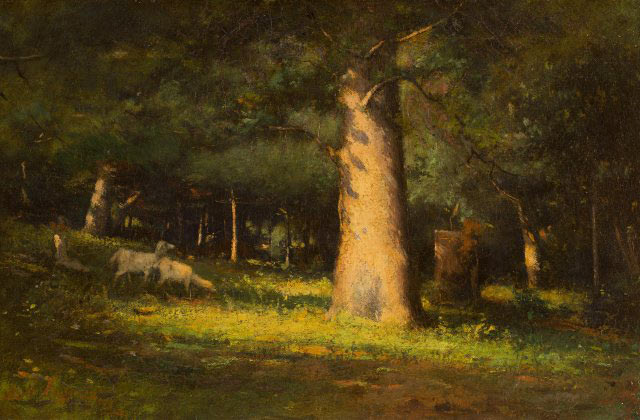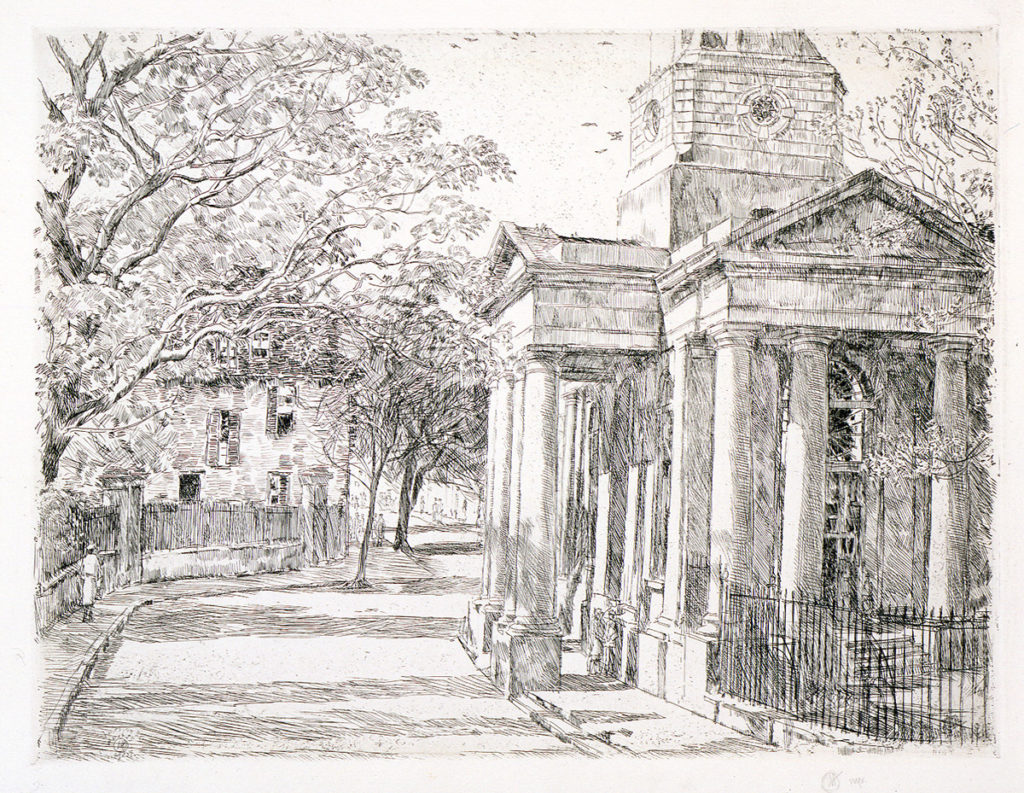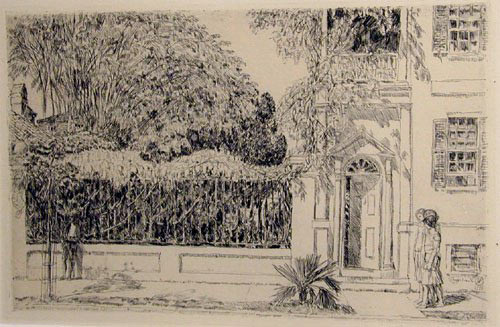In October, Lasley Steever, the Gibbes Museum’s director of adult programs and digital engagement, and also my (wonderful) internship supervisor, asked me to write a blog in honor of the upcoming holidays. We agreed that a trip to the museum galleries would offer me inspiration and clarity for the assignment.

As I left the offices, crossed the street to the main museum building, and climbed the stairs to the second floor galleries, I ruminated about how I was at a loss for ideas. My mind was a blank slate. But when I entered the second floor galleries, I was greeted by Elliot Daingerfield’s Sunlight in the Forest and my uncertainty vanished. The painting reawakened memories of my horseback riding days in grade school at stables in Charleston, most notably at Stono River Stables. In the fall, my Saturdays were devoted to lessons. I would bundle up, lace up my riding shoes, and my mother would drive my sister and me to the stables. My favorite part of the lesson was the trail rides following formal instruction in the ring. Sunlight in the Forest transported me back to these trail rides. The lofty, soaring trees with thin trunks lined our pathways, casting shadows that created the dappled light effect that is so accurately rendered by Daingerfield. Similarly, Edwin Harleston’s oil painting Boone Hall Plantation captures the scenery I appreciated on my beloved trail rides.

Next in the galleries, I encountered Childe Hassam’s etchings, Saint Philips and Spring in Charleston, and more memories resurfaced. My childhood house was on Tradd Street, and I belonged to a church on Meeting Street. Sundays mornings, we would walk as a family to Sunday school, passing by the quintessential Charleston Single Houses and homes of dear friends and acquaintances, with their gracious porches and their fanciful wrought-iron gates. As a child, I took these sights for granted. As an adult, though, after graduating from college in the Northeast and living elsewhere for the past six years, I can only now fully appreciate how special and how unique this city is.

Leaving the galleries that October afternoon, I was amazed at how art had the power to spark vivid and visceral memories of time and place. Today, I am thankful for art and its ability to tap into good times that might otherwise have been forgotten. This inspires and motivates me to pursue opportunities to make new memories in Charleston this holiday season.
—Brett Katharine Porter, fall intern, Gibbes Museum of Art
Top image: Boone Hall Plantation, ca. 1925, by Edwin Harleston (American, 1882–1931); oil on canvas; 14 x 16 7/8 inches; Courtesy of the Gibbes Museum of Art, Charleston, SC; 1997.009
Published November 22, 2016

